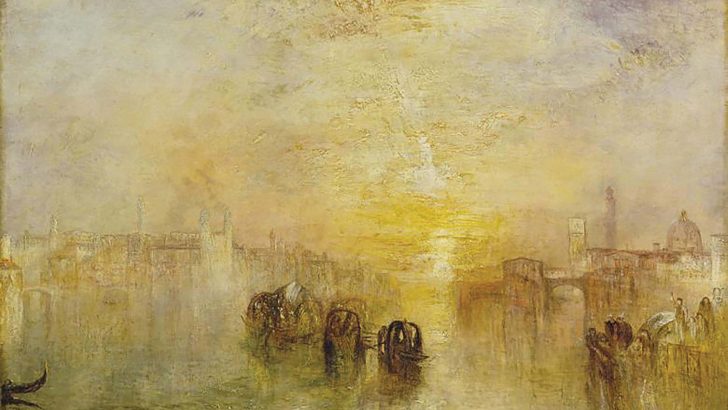Turner: The Sun is God, Exhibition at the National Gallery of Ireland, mounted in association with the Tate Gallery London; runs to 6 February 2023; Beit Wing, Rooms 6-10; tickets €5 (entry free on Wednesdays, 9.15-11.30 am)
Curated by Niamh MacNally and David Blayney Brown
Many years ago the English painter John Piper remarked that “Romantic art deals with the particular”. This is especially true of Turner, who said of him “My business is to paint what I see”.
But what Turner saw was not what everyone sees. Most of us allow our brain to impose on what we see a pre-ordained idea of what is there. A painter like Turner, however, saw and tried to record in his art what he saw, evanescent moments, unique and ever changing combinations of light, water and air. This show is filled with such images and is a joy to visit.
Unlike most exhibitions this is not an array of finished works. Exhibition paintings are here, but so too are the studies and sketches with minute squiggles of pencil and ink that record the impulsive moment.
Finished work
In one gallery the finished work of art, Apullia in search of Appulus, is displayed. In the next room, in a case, is displayed one Turner’s working notebooks, little more than the size of a cigarette packet, open at the page that records his first tentative idea for the painting. The composition remained intact to the end, but the development from impulse to finished canvas was a long, complex one.
This show is rather like walking through the artist’s studio, and seeing various works in different stages of treatment and development. It is fascinating to see the artist’s creative process at work. The process is as much a living thing as the finished work.
There are pictures here such as an avalanche in the Alps, a raw drama of rocks in free fall, on to The Cutting of the Golden Bough (described in Virgil – now famous for quite other reasons), a mist of late afternoon haze. These represent the extreme of his styles, from early to late.
There are other pictures too with classical titles. But the allusions are something of an afterthought, it seems to me. The real interest of the artist is always in the landscape and its movements at one particular moment.
In the same display case is another, far more finished treatment of a scene. But it seems that Turner only tried to capture a moment in the open air; such coloured images were worked up later in his local lodgings, and then elaborated back in his London studio. But between these stages are arrays of working studies and sketches that will for many visitors contain the real delight of this show.
It is a show not just to visit, but to revisit. The interest of the artist in the particulars of atmosphere, of effects that others never even attempted to capture, is all before you.
Venice was a place which his great admirer Ruskin devoted a three volume work, The Stones of Venice (1851-1853), the labour of years as we can see. Turner spent a comparatively short time in that water-born city, but was totally engaged by its light and its water. What Ruskin saw as a hard materiality, for Turner was in effect a series of transitory moments created by light. Turner’s Venice creations are glorious confections of gold and bronze, visionary moments of illumination which it is hard to believe are really an image of that tourist tortured city. A truly sensational show, and not to be missed.


 Peter Costello
Peter Costello J. M. W. Turner, Going to the Ball, San Martino, Venice , exhibited 1846 (Tate Gallery per NGI).
J. M. W. Turner, Going to the Ball, San Martino, Venice , exhibited 1846 (Tate Gallery per NGI). 